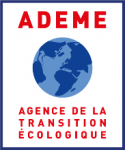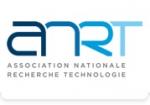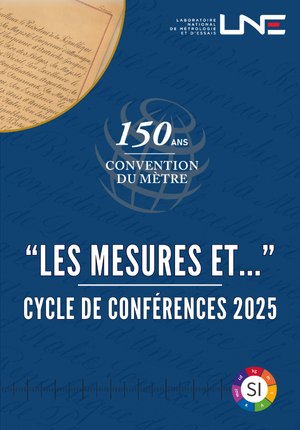Caractérisation moléculaire et imagerie de l'interface électrolyte-solide (SEI) dans des batteries lithium-ion par spectrométrie de masse haute résolution // Molecular characterization and imaging of the solid electrolyte interphase (SEI) in lithium-ion b
|
ABG-132728
ADUM-66785 |
Sujet de Thèse | |
| 01/07/2025 |
Université de Pau et des Pays de l'Adour
Pau - Nouvelle Aquitaine - France
Caractérisation moléculaire et imagerie de l'interface électrolyte-solide (SEI) dans des batteries lithium-ion par spectrométrie de masse haute résolution // Molecular characterization and imaging of the solid electrolyte interphase (SEI) in lithium-ion b
- Chimie
Spectrométrie de masse haute résolution, Analyse des surfaces et interfaces (ToF-SIMS, XPS, Auger), Batteries Li-ion, Interface électrolyte-solide
high resolution mass spectrometry, Surfaces and interphases analysis ( ToF-SIMS, XPS and Auger), Li-ion batteries, Solid electrolyte interphase, Electrode materials
high resolution mass spectrometry, Surfaces and interphases analysis ( ToF-SIMS, XPS and Auger), Li-ion batteries, Solid electrolyte interphase, Electrode materials
Description du sujet
Le projet REACTIF, 'Élucidation des mécanismes RÉActionnels aux interfaces électrodes/électrolytes : une étape Clé pour des baTteries lithium-Ion perFormantes', vise à développer des méthodes avancées et transdisciplinaires intégrant la chimie analytique, les simulations numériques et les caractérisations physico-chimiques de surface, afin d'étudier et d'améliorer la performance et la durabilité des batteries lithium-ion (LIB).
Un des défis majeurs dans la technologie des batteries LIB est la formation et l'évolution des couches interfaciales au cours des cycles de charge et de décharge. Plus précisément, il s'agit de l'interface électrolyte-solide (SEI) à l'anode, et de l'interface cathode-électrolyte (CEI) à la cathode. Ces couches nanométriques, formées durant les cycles électrochimiques, jouent un rôle crucial dans la stabilité des batteries, mais sont également au cœur des phénomènes de vieillissement et de perte de performance. Dans le cadre du projet REACTIF, ce travail de thèse portera sur le décryptage, à l'échelle moléculaire, des processus chimiques qui gouvernent la formation et la composition des SEI et CEI.
Description du projet de recherche :
Cette offre de doctorat se concentre sur le développement instrumental et méthodologique nécessaire pour coupler des techniques de spectrométrie de masse à haute résolution (HRMS) telles que FT-ICR-MS avec des techniques d'analyse de surface telles que ToF-SIMS, XPS, et AES pour l'analyse d'interfaces complexes dans les batteries lithium-ion.
Le candidat travaillera d'abord sur des échantillons de batteries modèles étudiés précédemment dans le laboratoire, dans le but d'étendre ultérieurement les méthodes à des matériaux plus avancés. Le laboratoire IPREM possède une solide expérience dans le couplage des techniques de surface
(ToF-SIMS, XPS, AES) pour l'imagerie chimique à haute résolution spatiale. L'intégration du FT-ICRMS améliorera considérablement la résolution moléculaire et la précision analytique, en particulier pour l'identification des espèces organiques/inorganiques impliquées dans les mécanismes de dégradation interfaciale. Le travail initial consistera à développer des protocoles expérimentaux. Le projet se concentrera ensuite sur l'établissement de méthodes de calibration croisées entre les données ToF-SIMS et FT-ICR-MS, en tirant parti de la haute résolution de masse
du FT-ICR pour affiner l'attribution des pics ToF-SIMS. Un outil logiciel interne aidera à l'alignement spectral et à la recalibration de la masse. L'interprétation combinée avec l' XPS et l'AES intégrera les connaissances antérieures et validera les affectations chimiques. La combinaison de résolutions spatiales complémentaires, de l'échelle du nanomètre avec le ToF-SIMS et l'AES jusqu'à l'échelle du micromètre avec le MALDI-FT-ICR-MS, permettra une cartographie multi-échelle
des espèces organiques/inorganiques.
Le candidat sera également en charge de la sélection des systèmes d'intérêt (i.e. compositions d'électrodes et d'électrolytes), de la préparation des cellules Li-ion de laboratoire, de la conduite des tests électrochimiques (cyclage, analyse des performances), et du démontage des cellules pour les analyses post-mortem. Ces tâches seront effectuées dans l'entreprise Saft, à Bordeaux. L'objectif final
sera de comprendre l'impact des compositions des électrodes et de l'électrolyte sur les performances du système, qui est directement corrélé avec les compositions chimiques des SEI et CEI.
------------------------------------------------------------------------------------------------------------------------------------------------------------------------
------------------------------------------------------------------------------------------------------------------------------------------------------------------------
The REACTIF project, Deciphering REACtion Mechanisms at Electrode/Electrolyte Interfaces: a Key Step toward High-PerFormance Lithium-Ion Batteries, focuses on developing advanced and transdisciplinary methods integrating analytical chemistry, computer simulations, and chemical-physics surface characterizations to investigate and improve the performance and durability of lithium-ion batteries (LIBs). A key challenge in LIB technology is the formation and evolution of interfacial layers along battery charge and discharge operations. More precisely, the Solid Electrolyte Interphase (SEI) at the anode and the Cathode Electrolyte Interphase (CEI) at the cathode. These nanometric layers, formed during electrochemical cycling, play a crucial role in battery stability but are also central to aging phenomena and performance loss. Within the REACTIF project, this PhD work will focus on deciphering at the molecular level the chemical processes that govern the formation and composition of SEI and CEI.
Description of the research project:
This PhD offer focuses on the instrumental and methodological development required to couple high-resolution mass spectrometry (HRMS) techniques such as FT-ICR-MS with surface-sensitive techniques including ToF-SIMS, XPS, and AES for the analysis of complex interfaces in lithium-ion batteries.
The candidate will first work on model battery samples previously studied in the lab, with the goal of later extending the methods to more advanced materials. The IPREM laboratory has strong expertise in coupling surface techniques (ToF-SIMS, XPS, AES) for spatially resolved chemical imaging. The integration of FT-ICR-MS will significantly enhance molecular resolution and analytical accuracy, particularly for the identification of organic/inorganic species involved in interfacial degradation mechanisms.
Initial work will involve the development of experimental protocols. The project will then focus on establishing cross-calibration methods between ToF-SIMS and FT-ICR-MS data, leveraging the high mass resolution of FT-ICR to refine ToF-SIMS peak assignments. An in-house software tool will assist with spectral alignment and mass recalibration. Combined interpretation with XPS and AES will integrate previous knowledge and validate chemical assignments. The combination of complementary spatial resolutions, from nanometer-scale with ToF-SIMS and AES to micrometer-scale with MALDI-FT-ICR-MS, will enable a multi-scale mapping of organic/inorganic species.
The candidate will also be in charge of selecting the systems of interest (i.e., electrode and electrolyte compositions), preparing lab Li-ion cells, conducting electrical tests (cycling, performance analysis), and disassembling cells for post-mortem analyses. These tasks will be performed at Saft, Bordeaux. The final objective will be to understand the impact of the electrode and electrolyte compositions on the system's performance, which is directly correlated with the SEI and CEI compositions.
------------------------------------------------------------------------------------------------------------------------------------------------------------------------
------------------------------------------------------------------------------------------------------------------------------------------------------------------------
Début de la thèse : 01/10/2025
Un des défis majeurs dans la technologie des batteries LIB est la formation et l'évolution des couches interfaciales au cours des cycles de charge et de décharge. Plus précisément, il s'agit de l'interface électrolyte-solide (SEI) à l'anode, et de l'interface cathode-électrolyte (CEI) à la cathode. Ces couches nanométriques, formées durant les cycles électrochimiques, jouent un rôle crucial dans la stabilité des batteries, mais sont également au cœur des phénomènes de vieillissement et de perte de performance. Dans le cadre du projet REACTIF, ce travail de thèse portera sur le décryptage, à l'échelle moléculaire, des processus chimiques qui gouvernent la formation et la composition des SEI et CEI.
Description du projet de recherche :
Cette offre de doctorat se concentre sur le développement instrumental et méthodologique nécessaire pour coupler des techniques de spectrométrie de masse à haute résolution (HRMS) telles que FT-ICR-MS avec des techniques d'analyse de surface telles que ToF-SIMS, XPS, et AES pour l'analyse d'interfaces complexes dans les batteries lithium-ion.
Le candidat travaillera d'abord sur des échantillons de batteries modèles étudiés précédemment dans le laboratoire, dans le but d'étendre ultérieurement les méthodes à des matériaux plus avancés. Le laboratoire IPREM possède une solide expérience dans le couplage des techniques de surface
(ToF-SIMS, XPS, AES) pour l'imagerie chimique à haute résolution spatiale. L'intégration du FT-ICRMS améliorera considérablement la résolution moléculaire et la précision analytique, en particulier pour l'identification des espèces organiques/inorganiques impliquées dans les mécanismes de dégradation interfaciale. Le travail initial consistera à développer des protocoles expérimentaux. Le projet se concentrera ensuite sur l'établissement de méthodes de calibration croisées entre les données ToF-SIMS et FT-ICR-MS, en tirant parti de la haute résolution de masse
du FT-ICR pour affiner l'attribution des pics ToF-SIMS. Un outil logiciel interne aidera à l'alignement spectral et à la recalibration de la masse. L'interprétation combinée avec l' XPS et l'AES intégrera les connaissances antérieures et validera les affectations chimiques. La combinaison de résolutions spatiales complémentaires, de l'échelle du nanomètre avec le ToF-SIMS et l'AES jusqu'à l'échelle du micromètre avec le MALDI-FT-ICR-MS, permettra une cartographie multi-échelle
des espèces organiques/inorganiques.
Le candidat sera également en charge de la sélection des systèmes d'intérêt (i.e. compositions d'électrodes et d'électrolytes), de la préparation des cellules Li-ion de laboratoire, de la conduite des tests électrochimiques (cyclage, analyse des performances), et du démontage des cellules pour les analyses post-mortem. Ces tâches seront effectuées dans l'entreprise Saft, à Bordeaux. L'objectif final
sera de comprendre l'impact des compositions des électrodes et de l'électrolyte sur les performances du système, qui est directement corrélé avec les compositions chimiques des SEI et CEI.
------------------------------------------------------------------------------------------------------------------------------------------------------------------------
------------------------------------------------------------------------------------------------------------------------------------------------------------------------
The REACTIF project, Deciphering REACtion Mechanisms at Electrode/Electrolyte Interfaces: a Key Step toward High-PerFormance Lithium-Ion Batteries, focuses on developing advanced and transdisciplinary methods integrating analytical chemistry, computer simulations, and chemical-physics surface characterizations to investigate and improve the performance and durability of lithium-ion batteries (LIBs). A key challenge in LIB technology is the formation and evolution of interfacial layers along battery charge and discharge operations. More precisely, the Solid Electrolyte Interphase (SEI) at the anode and the Cathode Electrolyte Interphase (CEI) at the cathode. These nanometric layers, formed during electrochemical cycling, play a crucial role in battery stability but are also central to aging phenomena and performance loss. Within the REACTIF project, this PhD work will focus on deciphering at the molecular level the chemical processes that govern the formation and composition of SEI and CEI.
Description of the research project:
This PhD offer focuses on the instrumental and methodological development required to couple high-resolution mass spectrometry (HRMS) techniques such as FT-ICR-MS with surface-sensitive techniques including ToF-SIMS, XPS, and AES for the analysis of complex interfaces in lithium-ion batteries.
The candidate will first work on model battery samples previously studied in the lab, with the goal of later extending the methods to more advanced materials. The IPREM laboratory has strong expertise in coupling surface techniques (ToF-SIMS, XPS, AES) for spatially resolved chemical imaging. The integration of FT-ICR-MS will significantly enhance molecular resolution and analytical accuracy, particularly for the identification of organic/inorganic species involved in interfacial degradation mechanisms.
Initial work will involve the development of experimental protocols. The project will then focus on establishing cross-calibration methods between ToF-SIMS and FT-ICR-MS data, leveraging the high mass resolution of FT-ICR to refine ToF-SIMS peak assignments. An in-house software tool will assist with spectral alignment and mass recalibration. Combined interpretation with XPS and AES will integrate previous knowledge and validate chemical assignments. The combination of complementary spatial resolutions, from nanometer-scale with ToF-SIMS and AES to micrometer-scale with MALDI-FT-ICR-MS, will enable a multi-scale mapping of organic/inorganic species.
The candidate will also be in charge of selecting the systems of interest (i.e., electrode and electrolyte compositions), preparing lab Li-ion cells, conducting electrical tests (cycling, performance analysis), and disassembling cells for post-mortem analyses. These tasks will be performed at Saft, Bordeaux. The final objective will be to understand the impact of the electrode and electrolyte compositions on the system's performance, which is directly correlated with the SEI and CEI compositions.
------------------------------------------------------------------------------------------------------------------------------------------------------------------------
------------------------------------------------------------------------------------------------------------------------------------------------------------------------
Début de la thèse : 01/10/2025
Nature du financement
Précisions sur le financement
Financement d'une collectivité locale ou territoriale
Présentation établissement et labo d'accueil
Université de Pau et des Pays de l'Adour
Etablissement délivrant le doctorat
Université de Pau et des Pays de l'Adour
Ecole doctorale
211 Sciences Exactes et leurs Applications
Profil du candidat
Le candidat retenu doit être titulaire d'un Master (Maste 2 en France) ou d'un diplôme équivalent en
Chimie, Chimie analytique, Sciences des Matériaux ou Chimie-Physique. Elle/il doit être particulièrement motivé(e) pour travailler dans un environnement avec des collaborations nationales et internationales, en contact avec des partenaires industriels et à l'interface de plusieurs disciplines. La maîtrise de l'anglais est requise. Une expérience préalable en caractérisation de surfaces et/ou en spectrométrie de masse ainsi qu'en électrochimie serait appréciée.
The successful candidate should old a Master degree (Maste 2 in France) or equivalent in Chemistry, Analytical Chemistry, Material Sciences or Chemical-Physics. She/he should be particularly motivated to work in an environment with national and international collaborations, in contact with industrial partners and at the interface of several disciplines. English speaking is required. A previous experience in surface characterization and/or mass spectrometry as well as in electrochemistry would be appreciated.
The successful candidate should old a Master degree (Maste 2 in France) or equivalent in Chemistry, Analytical Chemistry, Material Sciences or Chemical-Physics. She/he should be particularly motivated to work in an environment with national and international collaborations, in contact with industrial partners and at the interface of several disciplines. English speaking is required. A previous experience in surface characterization and/or mass spectrometry as well as in electrochemistry would be appreciated.
15/07/2025
Postuler
Fermer
Vous avez déjà un compte ?
Nouvel utilisateur ?
Besoin d'informations sur l'ABG ?
Vous souhaitez recevoir nos infolettres ?
Découvrez nos adhérents
 CASDEN
CASDEN  TotalEnergies
TotalEnergies  ADEME
ADEME  Généthon
Généthon  Laboratoire National de Métrologie et d'Essais - LNE
Laboratoire National de Métrologie et d'Essais - LNE  Tecknowmetrix
Tecknowmetrix  CESI
CESI  Ifremer
Ifremer  MabDesign
MabDesign  MabDesign
MabDesign  ONERA - The French Aerospace Lab
ONERA - The French Aerospace Lab  ASNR - Autorité de sûreté nucléaire et de radioprotection - Siège
ASNR - Autorité de sûreté nucléaire et de radioprotection - Siège  ANRT
ANRT  PhDOOC
PhDOOC  Institut Sup'biotech de Paris
Institut Sup'biotech de Paris  Groupe AFNOR - Association française de normalisation
Groupe AFNOR - Association française de normalisation  SUEZ
SUEZ  Nokia Bell Labs France
Nokia Bell Labs France  Aérocentre, Pôle d'excellence régional
Aérocentre, Pôle d'excellence régional







